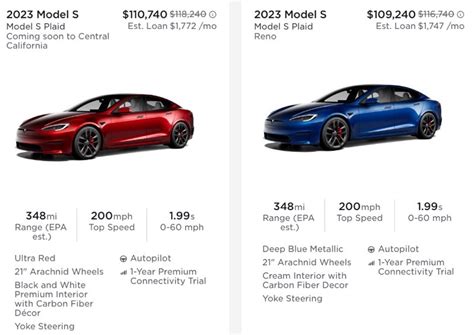
Tesla is now accepting trade-ins towards the purchase of the highly anticipated Cybertruck, prompting analysis of Tesla vehicle depreciation rates and their potential impact on Cybertruck buyers. The move provides a convenient option for prospective Cybertruck owners to offset the vehicle’s cost, but it also shines a spotlight on the resale value trends of Tesla vehicles.
Tesla Opens Trade-In Program for Cybertruck Purchases, Raising Depreciation Questions
Tesla has officially launched its trade-in program for customers looking to purchase the Cybertruck, allowing them to apply the value of their existing vehicles, including other Tesla models, towards the cost of the futuristic pickup. This development arrives as the initial wave of Cybertruck deliveries continues and as potential buyers weigh the financial implications of acquiring the polarizing vehicle. The move also triggers a broader examination of Tesla vehicle depreciation, a topic of considerable interest for current and prospective owners alike.
According to Tesla’s website, owners can trade in various vehicle makes and models, not just Teslas, toward the Cybertruck purchase. The trade-in process involves submitting vehicle details online for an initial estimate, followed by an in-person inspection to finalize the trade-in value. This streamlined approach aims to simplify the buying process and attract a wider customer base to the Cybertruck.
“Tesla now accepts trade-ins towards the Cybertruck,” the company confirmed, signaling a strategic effort to facilitate sales and manage the transition for customers upgrading to the new model.
However, the introduction of the trade-in program also draws attention to the depreciation rates of Tesla vehicles. Depreciation, the decline in a vehicle’s value over time, is a significant factor in the total cost of ownership. While Tesla vehicles have historically held their value relatively well compared to some other brands, recent market trends and increased competition in the electric vehicle (EV) sector have started to impact their resale values.
Several factors influence the depreciation of Tesla vehicles. These include:
-
Battery Technology Advancements: Rapid advancements in battery technology can make older Tesla models less desirable, as newer models offer improved range, charging speeds, and overall performance.
-
Increased Competition: The growing number of EV manufacturers and models is creating a more competitive market, which can put downward pressure on Tesla’s resale values.
-
Software and Feature Updates: Tesla’s frequent software updates can enhance the capabilities of existing vehicles, but they can also highlight the differences between older and newer models, affecting resale value.
-
Market Demand: Fluctuations in demand for Tesla vehicles, influenced by factors such as government incentives, economic conditions, and consumer preferences, can impact their resale values.
-
Vehicle Condition and Mileage: Like any vehicle, the condition and mileage of a Tesla significantly affect its trade-in value.
Depreciation Analysis and Implications for Cybertruck Buyers
Understanding Tesla’s depreciation trends is crucial for potential Cybertruck buyers considering a trade-in. While some reports suggest that Teslas depreciate faster than some luxury brands, this can vary significantly depending on the model, age, and condition of the vehicle.
Data from various automotive research firms indicates that Tesla vehicles, on average, depreciate at a rate comparable to or slightly higher than the industry average for luxury vehicles in the first few years of ownership. However, certain models, particularly those with older battery technology or higher mileage, may experience more significant depreciation.
For Cybertruck buyers, the trade-in program offers a convenient way to reduce the upfront cost of the vehicle. However, it’s essential to carefully evaluate the trade-in value offered by Tesla and compare it to independent appraisals from other sources. Buyers should also consider the long-term depreciation implications of owning a Cybertruck, particularly given its unique design and unproven track record in the resale market.
Several factors could influence the Cybertruck’s depreciation rate:
-
Novelty and Demand: The Cybertruck’s distinctive design and limited initial availability could sustain high demand and potentially slow down depreciation in the short term.
-
Production Capacity: Tesla’s ability to ramp up Cybertruck production will impact its supply and, consequently, its resale value.
-
Technological Advancements: Future advancements in battery technology and vehicle features could make older Cybertruck models less desirable, leading to faster depreciation.
-
Market Acceptance: The Cybertruck’s polarizing design may not appeal to all buyers, which could affect its resale value in certain markets.
“The acceptance of trade-ins signals Tesla’s commitment to streamlining the Cybertruck buying experience,” an industry analyst noted, “but it also underscores the importance of understanding depreciation and making informed financial decisions.”
Navigating the Trade-In Process and Maximizing Value
For Tesla owners considering trading in their vehicles towards a Cybertruck, several strategies can help maximize their trade-in value:
-
Thoroughly Clean and Detail the Vehicle: Presenting a clean and well-maintained vehicle can significantly improve its perceived value.
-
Address Any Minor Repairs: Fixing minor dents, scratches, or mechanical issues can boost the trade-in value.
-
Gather All Relevant Documentation: Having all service records, maintenance history, and original purchase documents readily available can instill confidence in the appraiser.
-
Obtain Multiple Appraisals: Comparing trade-in offers from Tesla and other sources, such as dealerships and online car-buying services, can help ensure a fair price.
-
Negotiate the Trade-In Value: Be prepared to negotiate the trade-in value based on market research and comparable sales data.
-
Understand Tax Implications: Consult with a tax professional to understand the potential tax benefits of trading in a vehicle versus selling it privately.
The Broader Context of EV Depreciation
The depreciation of EVs, including Teslas, is a complex and evolving issue. While some early concerns about rapid battery degradation and obsolescence have not fully materialized, the factors mentioned above continue to influence resale values.
Compared to traditional gasoline-powered vehicles, EVs have some unique depreciation considerations:
-
Battery Health: The condition of the battery pack is a critical factor in EV depreciation. Battery degradation, which reduces range and performance, can significantly lower the value of an EV.
-
Charging Infrastructure: The availability and accessibility of charging infrastructure can impact the demand for used EVs and their resale values.
-
Government Incentives: Changes in government incentives for EVs can affect the demand for both new and used models.
-
Technological Advancements: Rapid advancements in EV technology can make older models less desirable, leading to faster depreciation.
However, EVs also offer some potential advantages in terms of long-term cost of ownership:
-
Lower Fuel Costs: EVs typically have lower fuel costs than gasoline-powered vehicles, which can offset some of the depreciation.
-
Reduced Maintenance: EVs generally require less maintenance than gasoline-powered vehicles, which can further reduce ownership costs.
-
Longer Lifespan: Some studies suggest that EVs may have a longer lifespan than gasoline-powered vehicles, due to their simpler mechanical design.
Expert Opinions on Tesla Depreciation
Automotive industry experts offer varying perspectives on Tesla depreciation. Some argue that Tesla’s brand reputation, technological leadership, and strong customer loyalty help it maintain relatively high resale values. Others point to the increasing competition in the EV market and the potential for rapid technological advancements to drive down Tesla’s resale values.
“Tesla has done a remarkable job of building a brand that commands a premium in the used car market,” said a senior analyst at Kelley Blue Book. “However, as more EVs enter the market, Tesla will face increasing pressure to maintain its resale values.”
Another expert noted, “The Cybertruck is a unique case. Its unconventional design and limited production could create a strong demand in the used market, potentially mitigating depreciation. But it’s still too early to tell.”
The Future of Cybertruck Resale Values
Predicting the future resale value of the Cybertruck is challenging due to its unique characteristics and the evolving nature of the EV market. However, several factors will likely play a significant role:
-
Production Volume: Tesla’s ability to ramp up Cybertruck production will directly impact its availability and resale value. If production is constrained, demand could remain high, supporting resale values.
-
Technological Innovation: Future advancements in battery technology, autonomous driving features, and other EV technologies could impact the Cybertruck’s competitiveness and resale value.
-
Consumer Acceptance: The Cybertruck’s polarizing design will influence its appeal to a broader range of buyers. Widespread acceptance could support resale values, while limited appeal could lead to faster depreciation.
-
Competition: The emergence of competing electric pickup trucks from other manufacturers will create a more competitive market and could put downward pressure on Cybertruck resale values.
-
Battery Degradation: The long-term performance and degradation of the Cybertruck’s battery pack will be a crucial factor in its resale value.
Conclusion: Navigating the Cybertruck Trade-In Landscape
Tesla’s acceptance of trade-ins for the Cybertruck marks a significant step in the vehicle’s rollout and provides a convenient option for potential buyers. However, it also underscores the importance of understanding Tesla vehicle depreciation and making informed financial decisions. By carefully evaluating trade-in offers, considering long-term depreciation implications, and staying informed about market trends, Cybertruck buyers can navigate the trade-in landscape with confidence. As the EV market continues to evolve, ongoing monitoring of depreciation rates and resale values will be essential for both current and prospective Tesla owners. The convergence of Tesla’s innovative trade-in acceptance, alongside the inherent depreciation rates, will shape the evolving landscape of EV ownership, making vigilant insight vital for consumers. The Cybertruck, with its novel design, enters this sphere under unique circumstances, warranting close and careful financial planning from its potential buyers.
Frequently Asked Questions (FAQ)
-
Can I trade in a non-Tesla vehicle towards the purchase of a Cybertruck?
Yes, Tesla accepts trade-ins of various vehicle makes and models, not just Teslas, towards the purchase of a Cybertruck. The trade-in process involves submitting your vehicle’s details online for an initial estimate, followed by an in-person inspection to finalize the trade-in value.
-
How does Tesla determine the trade-in value of my current vehicle?
Tesla determines the trade-in value of your vehicle based on several factors, including its make, model, year, mileage, condition, and market demand. They also consider the vehicle’s history, such as any accidents or repairs. The initial estimate provided online is subject to change after an in-person inspection.
-
What factors influence the depreciation rate of Tesla vehicles?
Several factors influence the depreciation rate of Tesla vehicles, including advancements in battery technology, increased competition in the EV market, software and feature updates, market demand, vehicle condition, and mileage. Rapid advancements in battery technology can make older models less desirable, while increased competition puts downward pressure on resale values.
-
How can I maximize the trade-in value of my vehicle when trading it in towards a Cybertruck?
To maximize the trade-in value of your vehicle, thoroughly clean and detail it, address any minor repairs, gather all relevant documentation (service records, maintenance history), obtain multiple appraisals from different sources (Tesla, dealerships, online car-buying services), and be prepared to negotiate the trade-in value based on market research.
-
Is the Cybertruck likely to depreciate faster or slower than other Tesla models?
Predicting the Cybertruck’s depreciation rate is challenging due to its unique characteristics. Its distinctive design and limited initial availability could sustain high demand and potentially slow down depreciation in the short term. However, future advancements in battery technology, production capacity, market acceptance, and competition from other electric pickup trucks could influence its depreciation rate over time. It is crucial to monitor the used car market for the Cybertruck as it becomes more readily available.
-
How does battery health affect the trade-in value of a Tesla? The battery’s condition is critical in determining the trade-in value. Degradation, which reduces range and performance, will lower the value. Tesla assesses battery health during the inspection process. Consider obtaining a third-party battery health report before trading in to negotiate effectively.
-
What are the tax implications of trading in my vehicle for a Cybertruck? The tax implications of trading in a vehicle vary by state. In many states, you only pay sales tax on the difference between the Cybertruck’s price and the trade-in value of your old vehicle, potentially saving you money. Consult a tax professional to understand specific implications based on your location.
-
Can I negotiate the price of the Cybertruck if I trade in my old vehicle? Negotiating the Cybertruck’s price might be difficult, as Tesla typically doesn’t offer discounts on new vehicles. However, you can negotiate the trade-in value of your current vehicle to ensure you receive a fair price, effectively reducing the overall cost. Research the market value of your trade-in vehicle beforehand.
-
What documentation do I need to trade in my vehicle to Tesla? You’ll typically need the vehicle’s title (proof of ownership), registration, driver’s license, and any loan payoff information if you still owe money on the vehicle. Having service records and maintenance history can also help increase the trade-in value.
-
How long does the trade-in process take when buying a Cybertruck? The trade-in process can take a few days to a week, depending on how quickly you can submit the initial information online and schedule the in-person inspection. Once Tesla finalizes the trade-in value, it can be applied to your Cybertruck purchase.
-
Are there any alternatives to trading in my car to Tesla for the Cybertruck? Yes, you can sell your car privately, which might yield a higher price but requires more effort. You can also explore offers from other dealerships or online car-buying services like Carvana or Vroom to compare with Tesla’s offer.
-
How does the Cybertruck’s unique design affect its trade-in value compared to other trucks? The Cybertruck’s unconventional design could make its trade-in value more unpredictable. While its unique appeal might attract some buyers and maintain value, others might be hesitant, leading to faster depreciation if the demand is limited. Time will tell how the market responds to its distinct design.
-
What is the best time to trade in my car for a Cybertruck to get the most value? The best time to trade in your car depends on various factors, including market conditions, the time of year (e.g., demand for trucks may be higher in certain seasons), and the availability of the Cybertruck. Monitor market trends and consider trading in when demand for your current vehicle is high.
-
How does the increasing competition in the EV market impact the trade-in value of Teslas and Cybertrucks? Increasing competition puts downward pressure on resale values as more EVs become available. This means that Teslas, including the Cybertruck, may depreciate more quickly than in the past due to the wider range of choices for consumers.
-
Will future software updates for the Cybertruck affect its trade-in value? Yes, future software updates can affect the trade-in value. If newer Cybertruck models receive significant software enhancements that are not available on older models, it could make the older models less desirable and lower their trade-in value.
-
How do government incentives for EVs affect the Cybertruck’s trade-in value? Government incentives for EVs can impact both the demand for new and used models. If incentives are reduced or eliminated, it could potentially lower the demand for used Cybertrucks, affecting their trade-in value. Conversely, new incentives could bolster demand and maintain higher resale values.
-
What happens if my Cybertruck is damaged in an accident? How will that affect its trade-in value later on?
Any damage history, especially from accidents, will significantly reduce the Cybertruck’s trade-in value. The extent of the damage and the quality of the repairs will be factored into the appraisal. A clean Carfax report is crucial for maintaining resale value.
- Can I trade in a leased vehicle for a Cybertruck?
Trading in a leased vehicle is possible, but it’s more complex. You’ll need to determine the lease buyout price and compare it to the vehicle’s market value. If the buyout price is lower than the market value, you can trade it in, but if it’s higher, you’ll need to cover the difference.
- How does the range and charging infrastructure available affect the trade-in value of the Cybertruck?
The Cybertruck’s range and the availability of charging infrastructure are significant factors. Longer range and convenient access to charging stations will increase demand and maintain higher resale values. Limited range or insufficient charging options could negatively impact its trade-in value.
- Is it better to trade in my current car or sell it privately before buying a Cybertruck? What are the pros and cons?
Selling privately often yields a higher price but requires more effort, including advertising, negotiating, and handling paperwork. Trading in is more convenient but typically offers a lower price. Assess your time constraints and willingness to handle the selling process to decide which option is best.









